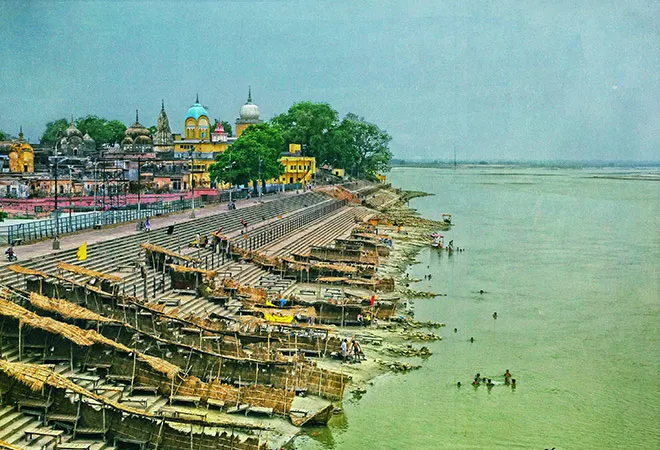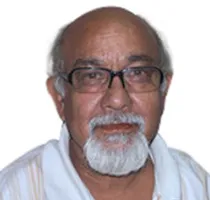
In its unanimous verdict, the country’s top court’s five-judge bench on Saturday, 9 November sought to resolve over a century old religious dispute at the historic town of Ayodhya in the biggest state of Uttar Pradesh, “whose origins were as old as the idea of India itself”. The pronouncement read that the disputed land is being given to a government-run trust for a temple and a five acre land at the “prominent site” in Ayodhya only to Sunni Waqf board for a mosque.
This was necessary because the court "must ensure that a wrong committed must be remedied," the judges said, adding that "tolerance and mutual co-existence nourish the secular commitment of our nation and its people." A trust or board run by the government should be formed within three months for the building of a temple, the court ordered stressing that land for mosque must coincide with the handing over of the disputed site to the trust.
The bench said, leaving no doubts, that till the scheme and allotment of alternative five acres to the Waqf Board was worked out, possession of the disputed land would continue to remain with the Centre.
The Bench, headed by Chief Justice of India Ranjan Gogoi and comprising of Justice S.A Bobde, D.Y Chandrachud, Ashok Bhushan and S. Abdul Nazeer said the Hindu litigants were able to establish their case that they were in possession of the outer courtyard. It added that the Muslim side was unable to prove their exclusive possession of the inner courtyard.
Two significant aspects of the historic judgement are that the apex court has held both the keeping of idols in the mosque precincts on the night of 22-23 December 1949, and the demolition of the disputed Babri Mosque structure by a Vishwa Hindu Parishad-RSS-BJP led agitators on 6 December 1992 criminal and illegal acts. According the Supreme Court of India both these acts were against the law of the land.
However, criticism from some quarters are pouring in on grounds that why the five-member bench has chosen to hand over the disputed land to an upcoming trust for construction of a temple despite declaring the two acts illegal and violating. It does not hold much ground since the highest court was dealing with a civil suit case, the criminality of the two acts were separate issues for the bench and therefore the same had no bearing on the judgement that had to decide the ownership of the disputed site.
However, the apex Court’s adverse observations on the criminality in the demolition of Babri Masjid are likely to have a bearing on ongoing cases in different courts in which some of the prominent BJP, VHP and Bajrang Dal leaders are allegedly involved,
The judgement is based on evidence, facts and findings of the Archeological Survey of India (ASI). The Hindu petitioners had established their case that they were in possession of outer courtyard at the site and the Sunni Waqf Board had failed to establish its case, the judges stated in their landmark judgement.
"Justice would not prevail if the Court were to overlook the entitlement of the Muslims who have been deprived of the structure of the mosque through means which should not have been employed in a secular nation committed to the rule of law. The Constitution postulates the equality of all faiths," the 1045-page judgment read.
The Supreme Court judgement also said that though there was a structure beneath the Babri mosque structure that was razed to the ground on 6 December 1992, though the ASI was not able to establish whether it was a temple or not but they were sure that the structure was non-Islamic.
One of the most significant rather crucial dimensions of the judgement is that the Court has dismissed the claim and assertions of the protagonists of Ramjanmbhoomi temple movement led by Sangh parivar that Babri Masjid was built after the demolition of a temple by Mir Baqi in Ayodhya in 1528.
This was done with the objective of building a political movement, and followers of Hindutva camps namely the VHP, Bajrang Dal and BJP who had been adamant on their claim that the Masjid was built after destroying a temple which belonged to Ramlala.
The judgment has found general acceptance and approval in large sections of society though there are some prominent voices including those of Muslim leaders that are finding fault with an argument that it is ‘Solomonic’ verdict in which ‘faith has won over facts’.
No judgment or verdict has ever found total acceptance by the two contending parties. Invariably, the party that wins accepts the verdict and expresses satisfaction and the losing party rejects and remains unhappy. It is a natural law and has dictated the destiny of people across the globe.
Whether the judgment leads to a closure and the minority community shows the will to move on is going to largely depend upon the good and positive intentions of Hindu leaders that they are not going to reopen other issues of similar nature like that of Krishna Janmbhoomi temple in Mathura and Kashi-Vishwanath temple in Varanasi. Though the Supreme Court has clearly pointed to a law namely Worship (Special Provisions) Act enacted in 1991 that bars pleas on other disputes of similar nature.
A categorical statement from responsible leaders like Prime Minister Narendra Modi, RSS chief Mohan Bhagwat or from the VHP that a status-quo is acceptable on other disputes would go a long way in restoring communal amity and establishment of social peace that is so fundamental to development and economic progress.
Nations and its people can only progress towards happiness when they decide to build future pushing back the wrongs of the past.
The views expressed above belong to the author(s). ORF research and analyses now available on Telegram! Click here to access our curated content — blogs, longforms and interviews.




 PREV
PREV


